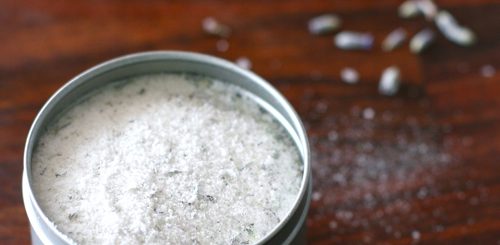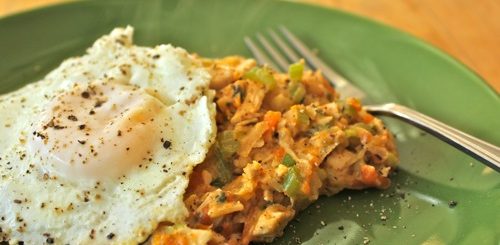{recipe} Homemade Harissa
Harissa is a spicy North African sauce or paste made from dried chilis, toasted spices, garlic, and oil. In Morocco, Tunisia, Algeria, and Libya, people use harissa like mustard or ketchup–it goes on many, many things. It’s hard to find a really excellent version to buy in the U.S., but luckily it’s pretty easy to make at home. I like to make a large batch and preserve it in cute jars so I can give them as hostess gifts.

Have you ever bought harissa at the supermarket? It usually comes in a tube and is thin, smooth, and bright red. It is hot, to be sure, but it lacks depth and flavor and is no more exciting to me than any other culture’s version of tongue-numbing red sauce. But the homemade stuff is completely different; it’s a harissa I can really get excited about. It layers the heat from the chili with the flavors of the seasonings. The aroma of fresh toasty spices, garlic, and lemon are all there. Unlike other hot sauces, which are just hot, homemade harissa is both hot and flavorful. It’s easy to see why you’d want to put it on everything!
Luckily, my Dad grows all sorts of chili peppers in his garden and dries them for later use. I mixed and matched, for layers of heat and flavor, and I recommend the same for anyone trying this recipe. I have made this with both dried and fresh chilis, and I think it tastes better with dried chilis so I have used them in the recipe below.

This recipe will make about 2 cups of harissa, which may sound like a lot – but if you like it as much as my husband does, it will be gone in about a week. It lasts for quite awhile in the fridge as long as it’s sealed in a jar. I like to make a double or triple batch, then load it into those cute little quarter-pint canning jars. I would probably be OK just leaving them as is, but to be on the safe side I preserve them before labeling and storing them.
Before getting started, I recommend opening as many windows and doors in the kitchen as possible, because once you process this many chilis, the fumes can be overwhelming. Children, people who are sensitive to hot peppers, or people who have breathing troubles should be sent out of the room. (Seriously.) I also use latex or rubber gloves to handle this many chilis, as I have had some bad experiences with skin irritation from handling hot peppers. Finally, as my mother once so wisely advised, you should follow this rule of thumb when handling hot peppers: “don’t touch your eyes and don’t touch your crotch.” So you may want to keep that in mind too.
Recipe: Homemade Harissa
makes about 2 cups
INGREDIENTS:
- about 4 cups dried red chilis (a mixture of Anaheim, red jalapeños, New Mexico chilis, chile de arbol, etc. is best)
- 1 Tblsp cumin seeds
- 1 Tblsp coriander seeds
- 1 tsp caraway seeds
- zest and juice of 1 large lemon
- 2 tsp salt
- 4 large cloves garlic, peeled and crushed
- olive oil – about 1/2 cup to 1 cup, more or less
- Before getting started, I recommend opening as many windows and doors in the kitchen as possible, because Children, people who are sensitive to hot peppers, or people who have breathing troubles should be sent out of the room.
- Remove the stems of the chilis and some of the seeds. The more seeds you remove, the less hot the finished product will be – so if you like it very hot, leave them in, and if you prefer a more mild sauce, remove as many as possible. I usually pop off the stem, shake out the seeds that come loose, and leave the ones that remain.
- Soak the dried chilis in boiling water until soft, about 20 or 30 minutes.
- Meanwhile, toast the cumin, coriander, and caraway seeds in a dry pan. When they begin to smell aromatic and toasty, remove from pan.
- Put seeds, lemon juice and zest, and salt in the food processor. Pulse a few times to grind and add a splash of olive oil. Continue pulsing until the spices are pulverized, adding more oil if necessary.
- Drain chilis and add soaked chilis and seeds to the food processor. Add the garlic and blend. Add olive oil, little by little, until desired consistency is reached – a thin paste is ideal.
- Decant into jars. If storing in the fridge, top with a little olive oil. Or follow directions here to safely preserve the harissa in jars.
If you liked this post, you may also enjoy…






Looks awesome!
@Asma thanks – I actually made this one awhile ago, but may have to try a Libyan inspired version next! 😉
Yes!!!!!
I’ve been trying to track down some harissa but even the more eclectic markets at which I shop don’t seem to carry it. I’ll definitely be whipping up a batch soon!
@Dana awesome! I hope you like it!